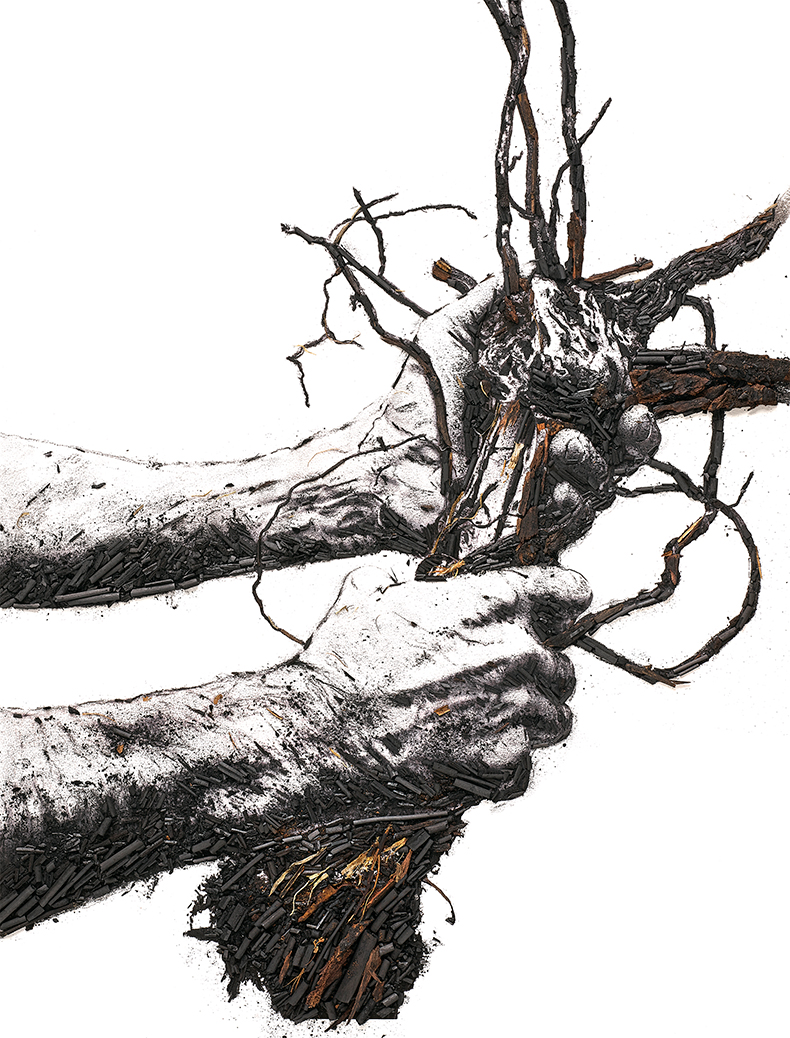From the April 2022 issue of Apollo. Preview and subscribe here.
The wine critic Elin McCoy recently pondered the question of whether wine was an art form, concluding, ‘does it really matter?’ There have been a growing number of connections between wineries and artists in recent years, from artists creating labels for vintages such as Château Mouton Rothschild and Leeuwin Estate, to estate owners such as the Mondavi, Graff and Hess families who proudly display their art collections throughout their vineyards. There are also, however, more organic collaborations, as wineries invite artists to discover the terroir through commissions, each artist in effect becoming a winemaker for the duration of the project.
In wine culture, the winemaker has become a hero in recent decades, a champion for individuality and artisanship, an antidote to the manufactured and globalised. The figures of artist and winemaker have been grafted on to each other in these winery collaborations, offering a hybridisation of their processes, and a way for their audiences to reflect on the aesthetic experiences both wine and art supply. ‘Artists bring their natural curiosity, creativity and vision to the world of winemaking,’ says Fabien Vallérian, director of Art and Culture at Maison Ruinart, which has been inviting artists to the estate since 2008.
Adding artists to the assemblage can provide a useful perspective on the aesthetic experience of wine, because of the ways in which artists grapple with materials and intentions. Both artist and winemaker possess a fascination with materials, and their work can reconcile science and art. Olafur Eliasson is the most recent artist to take on the Mouton Rothschild commission of creating a label for the house, having visited the estate in Bordeaux to observe its environment over the year and transfer these impressions on to the house’s 2019 vintage. His label portrays the path of the sun and reflects nature’s role as primer for the manmade in the winemaking process. ‘Tasting the wine connects us to the local environment, to the soil and to the particular weather, seasons and lighting of the place,’ Eliasson says.
Flow Hands (2019), Vik Muniz. Courtesy Ruinart

The Brazilian artist Vik Muniz has similarly been inspired by nature, and natural materials have long been part of his work. During a year-long residency in Reims in 2019, at the invitation of Ruinart, the artist visited the vineyards, observing the diurnal movements, the soil and the foliage throughout the cycle of the grape. In response to his time there, he created a body of work called Shared Roots. ‘These are all connected. Everything comes from the ground, and everything comes from the soil,’ Muniz says. The soil is geology and topography, but it is as a canvas for the vines, and their potential, that it captivates the artist, who says: ‘I try to figure out where it’s going, and why it’s going that way. Vines have an intelligence that is too slow for us to perceive.’
While Eliasson looks up at the skies, and Muniz looks outwards on to the landscape, the British artist David Shrigley looks down at the ground for his inspiration from the vineyard: ‘WORMS WORK HARDER THAN US’ declares a drawing he made after his own residency at Ruinart, part of his Unconventional Bubbles works in response to the Maison’s Carte Blanche commission of 2020.
Wine, like art, is the product of human decisions and design. Muniz, who has described himself as a ‘low-tech illusionist’, has incorporated natural elements into his artistic practice, such as sugar, chocolate, flowers and wine itself. The artist may intend to work with a particular medium or ingredient, but the material will guide the outcome. The tension between what you intend to make and the direction in which you are guided by the material you must use also occurs in winemaking – often, it can be seen as a way of navigating the adversity of nature and the know-how of man. Muniz learned this from close observation of the methods of Ruinart’s winemaker Frédéric Panaïotis: ‘Fertile earth does not produce good wine; you need adversity to produce character. It’s quite beautiful,’ Muniz says. ‘We’re discussing wine, sure, but in essence we’re touching upon deep philosophical truths about life.’
Poor decisions will result in wine that misses this potential. As in art, the decision-making processes during the fashioning of the work will determine its success as an expressive vehicle. ‘Meaning ferments like wine,’ says Shrigley, ‘I like the way that the context changes everything. Meaning is a collaboration with the viewer.’ Another of Shrigley’s graphics declares: ‘THE WINE IS IMPORTANT; THE REFLECTION OF THE WINE IS ALSO IMPORTANT.’ For Eliasson, ‘The kitchen at my studio plays a very important role with my team, acting as a kind of social glue, bringing people together around a table to exchange ideas. The prospect of turning a wine bottle into an artwork seemed an extension of that.’ The ritual of eating and drinking together involves the same perceptions as appreciating a work of art. ‘In my opinion, the only way you can feel all the senses at the same time is in a meal,’ Muniz says.
Wine in the bottle is of course alive, because of the ongoing fermentation process, but for Eliasson, the science takes on a certain symbolism. ‘I find it fascinating that every plant stores a bit of sunlight and soil in its leaves and fruit,’ he says. ‘The environment is transformed into a liquid that you take into your body. This is worth reflecting on when you hold the bottle or take a sip.’ Both wine and art have the power to transform, and both demand their audiences drink and think more discerningly about the design, passion and vision that have gone into the making. Otherwise, as Shrigley warns in his painting: ‘IF WE FAIL WE WILL HAVE TO DRINK BEER.’
From the April 2022 issue of Apollo. Preview and subscribe here.


